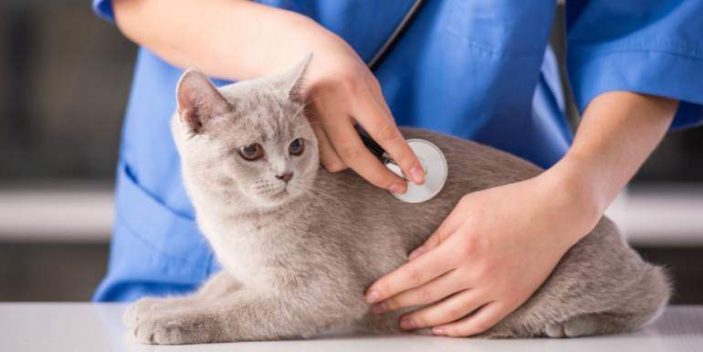Erythropoiesis or the production of red blood cells (erythrocytes) in the bone marrow is regulated by hormone erythropoietin and requires among other things iron, folate, vitamin B12, and heme.
Therefore, iron (Fe) deficiency will affect the normal production of red blood cells and severe IDA “is characterized by microcytosis and hyperchromasia with inadequate regeneration, and low serum iron, iron saturation, and ferritin.” notes an article on ‘Iron deficiency anemia’ published at the Canadian Veterinary Journal.
In case of a Fe deficiency, since this mineral form part of hemoglobin (that transports oxygen), expect hemoglobin(oxygen-carrying feature) to also be low red blood cells too.
In most cases, anemia that results from iron deficiency is caused by excessive blood loss and other underlying condition or disease and it can be fatal. Although rare, it can be due to improper diets too.

Additionally, about 50% of kittens aged 5-10 weeks may suffer from a transient iron-caused anemia deficiency due to the low amount of this mineral in milk for kittens. Fortunately, as kittens wean and begin depending on meat diets, this anemia will be resolved.
Finally, since this trace mineral is added to most of the commercial diets, a deficiency and consequently anemia is rare.
Signs to expect
Signs will be noted after there has been a depletion of the stored amount followed by an iron deficiency erythropoiesis.
Secondly, the symptoms of this type of anemia will depend on how severe it is. Some of the commonly noted clinical signs include loss of appetite, weakness, low growth rate, depression, lethargy, panting, rapid breathing rate, and weakened immunity.
Also, your cat’s stool may tarry and dark in color, their mucous membrane may become pale, there may also show signs of unwillingness to move or even exercises as well as some abnormal behaviors such as not using their littering box, rock or soil eating., among others
Causes
- External blood loss including gastrointestinal hemorrhage especially in case of gastrointestinal tumors
- Infestation by parasites that suck blood such as ticks, hookworms, and fleas
- Urinary tract infections
- Lymphoma
- Intestinal or stomach masses
- Improper diets especially home-based vegetarian diets they have lower iron when compared to meat diets.
- Exposure to some toxics
Diagnosis
Your vet will want to know more about your cat’s history, conduct some physical examinations as well as some conduct some diagnostic tests including blood chemistry profile, complete blood count, coagulation parameters, packed cell volume test, aspiration of bone marrow, and iron panel.
Also, there will be a check for any blood in their stool as well as fecal flotation to be certain the problem is not caused by hookworms.
Usually, you expect low ferritin and serum iron concentration while total iron-binding capacity will be high. Unfortunately, inflammatory and neoplastic diseases may increase ferritin making IDA diagnosis quite challenging.
Treatments and iron for cats with anemia
Treatment options will depend on the underlying cause and severity of the anemia. Your vet will treat the underlying cause and in severe cases consider blood transfusion.
Afterward, he or she may go for injection such as the use of iron dextran intramuscular injections (or sorbitol or ferric ammonium citrate) to help correct the low level of this mineral followed by oral iron supplements for cats.
As MSPCA notes, giving iron “ intravenously may cause anaphylactic reactions.” On the other hand, oral supplementation may be more effective if given together with vitamin C (makes stomach acidic). This method of administration has fewer side effects which will be mainly vomiting or constipation.
On supplements, fumarate, ferrous gluconate, and sulfate are often prescribed as well as common brands such as Pfizer Animal Pet-Tinic and Liqui-Tinic 4X Concentrate.
Oral supplementation alone may not be so successful since severe deficiency hinders Fe gastrointestinal absorption.
Ensure you continue with supplementation for up to two months or until the various symptoms subside and the iron level in your cat’s body returns to the normal level. Note that an excessive amount can lead to toxicity.
Finally, consider complete blood count after every up to four weeks. Your vet will also check on the volume erythrocytes in blood. Also, consider isolating your cat until it is strong to mingle with other healthy pets.
Conclusion
Follow any instructions given by your vet, avoid OTC Fe supplements for cats and contact your vet in case of any serious side effects.
